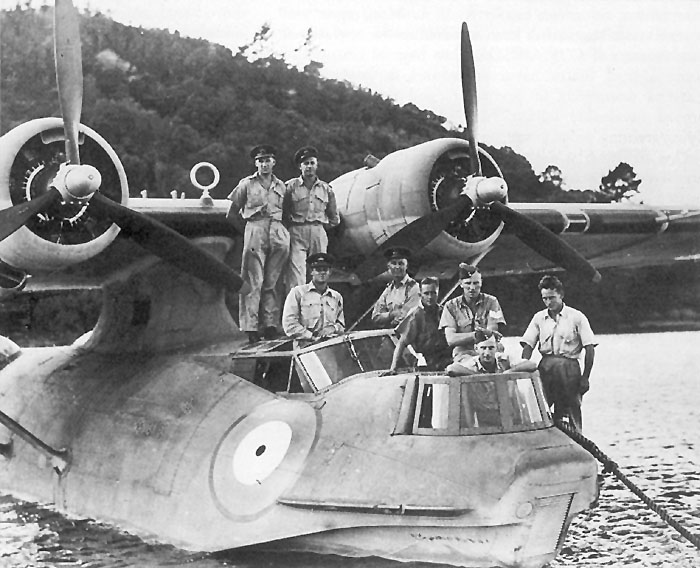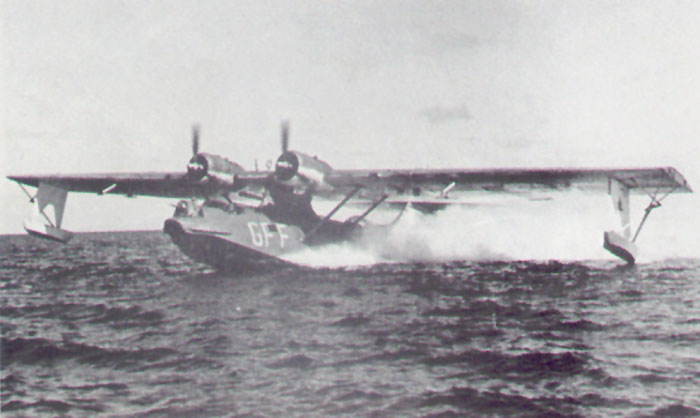|
Resulting
from a design competition between Consolidated and Douglas for a U.S.Navy
specification requiring a cantilever monoplane flying boat, the Consolidated
XP3Y-1 prototype first flew on the 21st of March, 1935, and following testing,
60 were ordered by the Navy from Consolidated. After several updates and
modifications, the aircraft evolved into what is probably the most successful
flying boat of all time, serving many nations' air sea rescue services
until well into the 70's, and many civilian operators to the present day.
6 (Flying
Boat) Squadron
Under Lend-Lease provisions, in April 1943 the first of 22 PBY-5 flying boats were ferried by American crews from San Diego to Lauthala Bay in Fiji, where 6 (Flying Boat) Squadron (codes XX-x) commanded by Wing Commander G.C.Stead, with Squadron leaders R.B.L McGregor and A.V.Jury as Flight commanders, was officially formed in May 1943, along with 3 (Flying Boat) Operational training unit (codes GF-x).
S/L McGregor
and several of the squadrons' crews had been sent up to Segond Channel,
Espiritu Santo where they were trained in U.S.Navy Catalina operations,
so had a good grounding before their own aircraft were received.
Needless to say, their navigation had to be very precise over these over water routes. This was to stand many of these airman in good stead post war when Tasman Empire Airways (TEAL, the forerunner of Air New Zealand) used Catalinas NZ4035 ZK-AMI and NZ4038 ZK-AMP to survey flying boat routes to Tahiti and the Pacific Islands.
From May to August the crews of 6 (FB) Squadron carried out training, shipping escort and anti -submarine patrols based at Lauthala Bay, and in August, six aircraft were sent to Tonga to carry out the same duties. At this time carrying out a two day rescue mission covering a torpedoed American troopship with the Hudsons of 4 (BR) Squadron.
|




